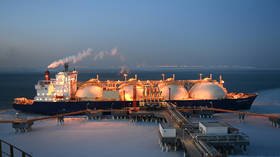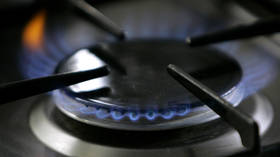New leader in LNG exports about to emerge

The US is set to boost its liquefied natural gas (LNG) capacity, once two new liquefaction units become operational late next year. This would enable the country to overtake Australia and Qatar as the world’s top LNG exporter.
The US Energy Information Administration expects the country’s LNG export capacity to reach 11.5 billion cubic feet per day in 2022, which, according to Goldman Sachs, would account for roughly 22% of expected world LNG demand.
As a rule of thumb, a billion cubic feet of gas would meet the daily requirement of five million US households, says Reuters.
America sells most of its LNG to Asia. So far in 2021, about 13% went to South Korea, 13% to China, and 10% to Japan, Reuters said, citing US energy data. The same three countries were the top destinations for LNG in 2020 as well.
The second-biggest importer of American LNG is Europe. The US was the continent’s top supplier of LNG in Q1 2021, surpassing Qatar and Russia. US global exports shot up by 42% in the first half of 2021 in comparison to last year, according to the Energy Information Administration, with Europe accounting for 37% of exports during that period.
LNG is a clear, colorless, and non-toxic liquid that forms when natural gas (almost exclusively methane) is cooled to -260F (-162C). The cooling makes the gas shrink 600 times in volume, and it becomes easier to store and ship. LNG has to be returned to its gaseous state before it can be used by households and industries for various purposes, such as heating, cooking, and generating electricity.
For more stories on economy & finance visit RT's business section














